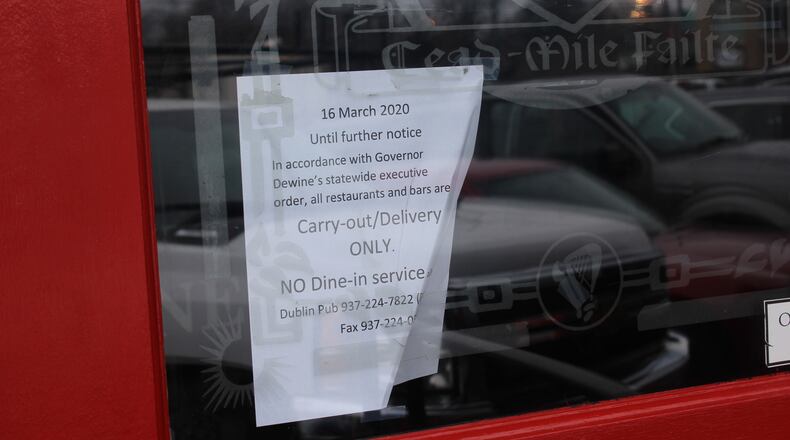“As the voice of Ohio’s restaurant community, we want to help elected officials and community leaders fully understand the negative impact this health crisis is having on Ohio’s restaurant industry,” said John Barker, president and CEO of the Ohio Restaurant Association, which conducted a statewide poll over three days, from March 22-24.
“These survey results are staggering, and we are doing everything we can to advocate for relief and to ease the hardships Ohio restaurants are facing during this terribly difficult time,” Barker said.
Key findings from the 308 respondents for the first week of survey results include:
- 47 percent have closed restaurant locations.
- 229 respondents are offering carry-out, drive-through or delivery service during this time.
- 44 percent of respondents saw their year-over-year sales for the week (March 8-14) decrease by 20-50 percent.
- 30 percent of respondents are seeing weekly and monthly year-over-year sales decline by 20-50 percent.
Credit: Ohio Restaurant Association
Credit: Ohio Restaurant Association
Restaurants that could quickly adapt to carry-out or delivery, or that already had strong take-out in place saw modest increases in the first week.
When asked how Ohio restaurants are working to help their local communities, responses included that they are offering a percentage of sales to charities, products to food banks, offering space for blood drives among other activities.
Ongoing concerns for respondents include significant employee layoffs, lack of materials to keep employees healthy and safe and access to sufficient government aid.
Restaurants also reported that while they limited their hours and menu options, they don’t believe the carryout-only model will sustain them for much longer.
About the Author

